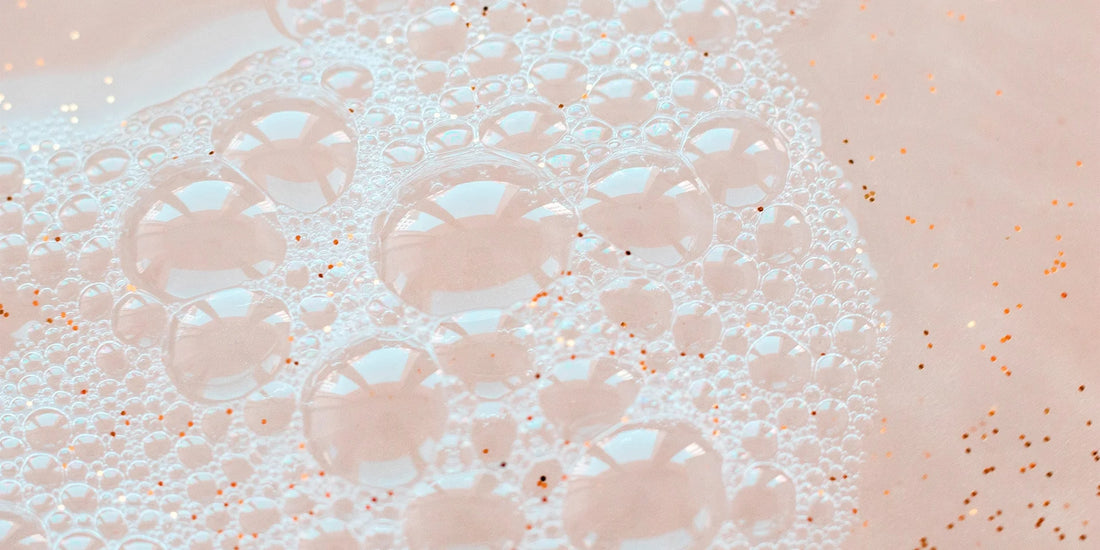
Why Bar Soap Triumphs Liquid Soap: A Detailed Comparison
Share
In the age-old debate of bar soap vs liquid soap, both contenders offer unique benefits for skin care, hand-washing, and overall hygiene. While soap's primary function remains constant—to clean by reducing friction and forcing longer wash times for effective germ removal—bar soap and liquid soap differ fundamentally in composition; with bar soap originating from natural fats and oils and liquid soap crafted from synthetic detergents and additives. Despite beliefs to the contrary, studies affirm that anti-bacterial soaps hold no advantage over regular varieties, and concerns about bar soap harboring bacteria are mitigated by proper hand-washing techniques.
The choice between bar soap and liquid soap often boils down to personal skin care preferences, concerns about dry hands, and sensitivity issues, rather than efficacy in cleanliness. Bar soap, celebrated for its eco-friendly profile and a history spanning centuries, caters to those preferring minimalistic and natural options. Conversely, liquid soap, with its versatile formulations including foaming soaps and shower gels, appeals to those valuing convenience and seeking solutions for specific skin health concerns. This article will further dissect the bar soap vs liquid soap debate, highlighting the advantages of bar soap in terms of eco-friendliness, health safety, cost-effectiveness, and more.
Eco-Friendly Impact
When considering the eco-friendly impact of bar soap vs liquid soap, several key factors come into play:
-
Packaging and Waste:
- Bar soap typically arrives in paper or cardboard, materials that are more readily recyclable and biodegradable, thus contributing less to landfill waste.
- Liquid soap, however, is often housed in plastic containers that may not be recyclable, adding to the plastic pollution problem.
-
Production and Carbon Footprint:
- The production of liquid soap demands more energy, primarily due to its packaging and the need for more water in its formulation, leading to a higher carbon footprint.
- Bar soap is generally produced with less energy and water, making it a more sustainable choice.
-
Usage and Environmental Impact:
- Users of bar soap tend to use six times less product per hand wash compared to liquid soap. This efficiency translates to less waste and energy use over the product's lifetime.
- Additionally, bar soap's ingredients are often natural and biodegradable, unlike the synthetic components in liquid soap that may harm aquatic ecosystems.
These points underscore the eco-friendly advantages of bar soap, from its packaging and production to its usage and broader environmental impact.
Health and Safety Advantages
Health and Safety Advantages
Hydration and Skin Care:
- Bar soap can effectively hydrate the skin, with certain formulations designed to moisturize more efficiently than liquid soaps.
- Natural bar soaps, often made by artisan soapmakers, are particularly beneficial for facial cleansing, providing gentle care without stripping the skin of natural oils.
- For individuals with sensitive skin or dermatological conditions like eczema, glycerin-rich bar soaps offer soothing benefits, helping to retain the skin's natural moisture.
Hygiene and Safety:
- Both bar and liquid soaps are equally effective in removing dirt, germs, and bacteria, ensuring proper hand hygiene.
- Misconceptions about bar soap accumulating harmful bacteria are debunked, as proper usage ensures any bacteria is washed off with each use.
- Bar soaps formulated with fewer chemicals and more natural ingredients are less likely to cause allergic reactions, making them a safer option for people with allergies or sensitive skin.
Exfoliation and Skin Stimulation:
- Direct application of bar soap provides a gentle exfoliating effect, stimulating circulation in the skin which is beneficial for overall skin health.
- Bar soaps can be crafted with natural exfoliants like ground oatmeal or coffee grounds, offering a unique scrubbing experience not as easily achieved with liquid soaps.
- Liquid soaps require the use of a loofah or sponge for exfoliation, whereas bar soap's inherent texture can naturally assist in removing dead skin cells.
Cost-Effectiveness
In evaluating the cost-effectiveness of bar soap versus liquid soap, several key factors emerge:
-
Price Comparison:
- A direct price comparison shows that a 354-ml bottle of Dove Body Wash costs $5.49, while a two-pack of 90-gram Dove soap bars is priced at $3.99, indicating that bar soap offers a more affordable option.
- On average, washing up with bar soap will cost less than half a penny per wash, in stark contrast to liquid soap, which costs around 3.5 cents per wash.
-
Usage and Waste:
- Research highlights that people tend to use almost seven times more liquid soap (2.3 g) than bar soap (0.35 g) for a typical hand wash, leading to quicker depletion and the need for more frequent purchases of liquid soap.
- The cost per gram further illustrates the economical advantage of bar soap, at approximately 1.2 cents, compared to liquid soap at about 1.5 cents, making bar soap a more cost-efficient choice in the long run.
-
Environmental and Additional Costs:
- Liquid soap incurs higher costs due to its packaging, especially for pumps which are not recyclable and may last hundreds of years in landfills, adding to its environmental and financial burden.
- The need for more water in liquid soap formulations not only increases its shipping weight and bulk but also necessitates the use of preservatives, further escalating its cost.
Longevity and Efficiency
When considering the longevity and efficiency of bar soap versus liquid soap, several factors contribute to the enduring nature of bar soap.
-
Longevity Factors:
- A bar of soap on average lasts six times longer than its liquid counterpart.
- Natural bar soaps, when used once a day, should last about a month, showcasing their durability and value.
- Factors such as the base oil used in the soap, the temperature of the water, and drying methods can significantly affect how long a bar soap lasts.
-
Efficiency Tips:
- Utilizing firm base oils like coconut oil in the soap composition.
- Reducing shower frequency to once daily and washing at cooler temperatures.
- Employing a soap saver or washcloth for lathering and a draining soap dish for drying.
-
Comparative Insights:
- While liquid soap's longevity varies based on bottle size and usage, bar soap generally offers a more consistent and predictable lifespan, especially when proper care is taken.
- Syndet bars, made from synthetic detergents, present an alternative with unique longevity characteristics.
These insights underscore the practical and sustainable advantages of choosing bar soap, highlighting its capacity to last longer and function more efficiently with mindful usage and care.
Variety and Availability
In exploring the variety and availability of bar soap versus liquid soap, several distinctions emerge, reflecting the diverse preferences and needs of consumers:
-
Ingredients and Composition:
- Bar Soap: Traditionally made from a blend of fats, oils, and an alkali, offering a straightforward, all-natural cleansing option for those seeking minimal chemical exposure.
- Liquid Soap: Comprises synthetic detergents, water, and various additives, catering to preferences for specific scents and properties like moisturizing, exfoliating, and gentle cleansing.
-
Form and Functionality:
- Bar Soap: Known for its eco-friendliness, travel convenience, and cost-effectiveness, bar soap appeals to those valuing simplicity and sustainability.
- Liquid Soap/Body Wash: Available in liquid or gel forms, these products are often chosen for their ease of use and the ability to formulate with syndets for a more tailored skin care regimen.
-
Consumer Choice:
- The selection between bar and liquid soap ultimately hinges on personal preference, with each offering unique advantages. While bar soap is lauded for its minimal and natural ingredients, liquid soap wins favor for its vast array of options and convenience.
This comparison underscores the rich diversity available to consumers, allowing for personalized skin care choices that align with individual preferences and values.
Conclusion
Throughout the discourse on the merits of bar soap versus liquid soap, it becomes evident that bar soap stands unparalleled in terms of sustainability, health benefits, cost-effectiveness, longevity, and the array of natural options available to consumers. The core arguments presented solidify bar soap's position not only as an eco-friendly choice but also as a versatile and comprehensive hygiene solution that caters to a broad spectrum of skin care needs while minimizing environmental impact. This revelation underpins the article's thesis that, despite the plethora of modern cleansing products, bar soap retains its timeless appeal and efficacy.
Reflecting on the broader implications, the choice between bar and liquid soap is emblematic of the larger conversation about environmental stewardship, personal health, and economic mindfulness in our daily routines. Encouraging a shift towards more sustainable and health-conscious choices, such as the use of bar soap, serves as a practical step individuals can take towards reducing plastic waste, conserving resources, and fostering well-being. As society continues to navigate the complexities of sustainability and wellness, the humble bar of soap emerges as a stalwart ally, urging further exploration and appreciation of its manifold benefits. So if you are in need of some handy vegan bar soap check out our shop today!
FAQs
Q: What makes bar soap a better option than liquid soap? A: Bar soap is generally considered more environmentally friendly due to its biodegradability. People tend to use a smaller amount of bar soap per wash, reducing waste, and bar soap is often more cost-effective. Despite liquid soap's aesthetic appeal in a bottle, bar soap is a practical and economical choice for handwashing.
Q: Why do some people prefer liquid hand soaps to bar soaps? A: Liquid hand soaps are often favored because they can be less drying to the skin, especially for those with sensitive skin. The skin's natural acidity can be disrupted by the alkalinity of soap, leading to dryness and irritation. Liquid soaps frequently include added moisturizers to counteract this effect, making them gentler on the skin.
Q: What are the chemical differences between bar soap and liquid soap? A: Both bar and liquid soaps are created through saponification, a reaction between a fat or oil and an alkali substance called lye. The key difference lies in the type of lye used: bar soaps are made with sodium hydroxide, while liquid soaps typically use potassium hydroxide, resulting in a more water-soluble product.
Q: Between bar soap and body wash, which do dermatologists recommend? A: Dermatologists note that body washes often contain more moisturizing ingredients, which can be beneficial for skin health, according to Nicole Negbenebor, MD, from Brown University. However, for those who prefer the feeling of being thoroughly clean or have no specific skin concerns, traditional bar soaps or shower gels can be perfectly adequate, as pointed out by dermatologists.

2 comments
Thank you for a concise tutorial. I am always trying to use less packaging reusables etc. Just switched to bar shampoo. I will try cerave bar soap for sensitive skin since I love the liquid.
I would prefer bar soap if I didn’t need to pick the whole thing up. It would be nice if you could, similar to a vegetable peeler, slice a piece of and use that only. Something about picking up the whole thing bothers me, I reason I don’t fully yet understand. Thank you for your article. You’ve brought many great points to light.